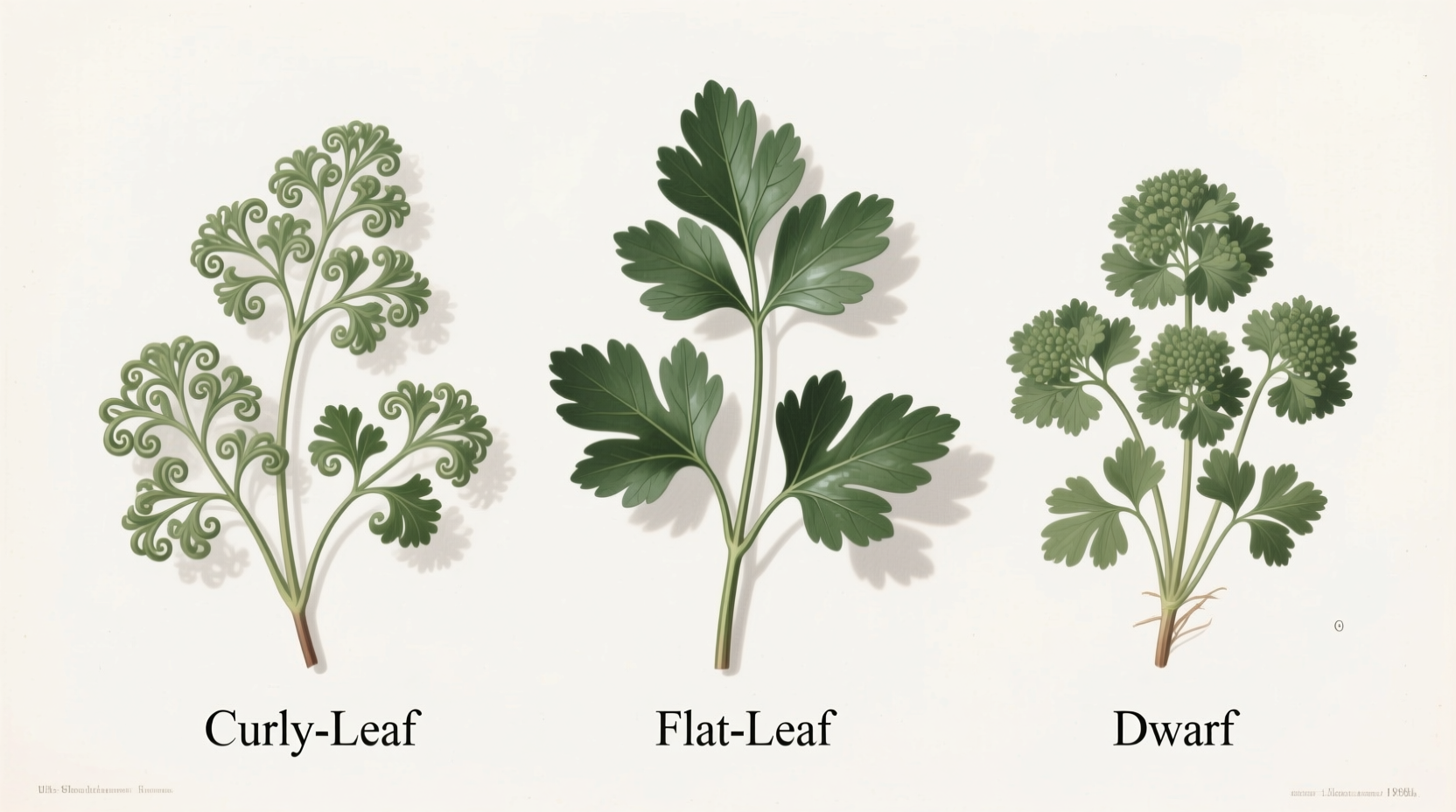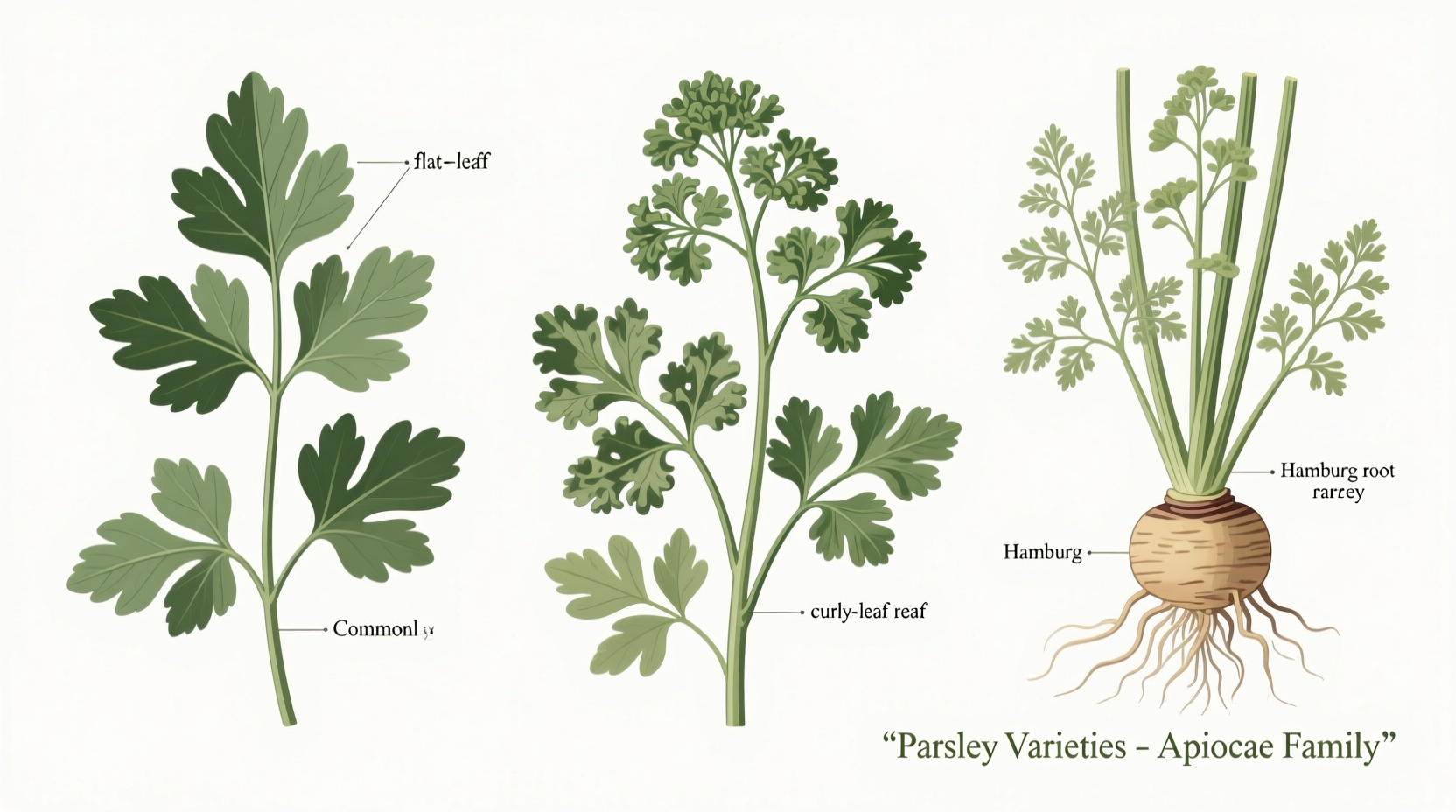Discovering the right parsley variety can transform your cooking and gardening experience. While many home cooks and gardeners treat parsley as a single herb, understanding the specific characteristics of each type helps you select the perfect variety for your culinary creations or garden conditions. This guide provides practical insights into the different parsley plants, their unique qualities, and how to leverage them effectively.
Understanding Parsley Varieties: More Than Just a Garnish
Parsley (Petroselinum crispum) belongs to the Apiaceae family, sharing botanical relations with carrots, celery, and cilantro. Originally native to the Mediterranean region, this biennial herb has evolved into several distinct varieties through centuries of cultivation. Recognizing these differences goes beyond mere identification—it directly impacts flavor intensity in dishes and success in your garden.
The Three Main Types of Parsley Plants
Curly Parsley (Petroselinum crispum)
With its distinctive ruffled leaves, curly parsley is the most recognizable variety in many grocery stores. The tightly curled, bright green foliage creates an attractive garnish, but this variety offers more than visual appeal.
Gardeners appreciate curly parsley's cold tolerance, often surviving light frosts that would damage other herbs. It typically grows 8-12 inches tall with a bushy habit that makes it suitable for container gardening. While milder in flavor than its flat-leaf counterpart, curly parsley maintains its structure well when cooked, making it ideal for soups and stews where you want visible herb presence.
Italian or Flat-Leaf Parsley (Petroselinum crispum neapolitanum)
Professional chefs consistently prefer flat-leaf parsley for its robust flavor and versatility. The broad, flat leaves resemble cilantro but offer a cleaner, more pronounced herbal taste with subtle peppery notes.
This variety contains higher concentrations of essential oils, resulting in approximately 30% more flavor compounds than curly parsley according to agricultural studies from the University of California's Cooperative Extension. Flat-leaf parsley grows slightly taller (12-18 inches) and demonstrates better heat tolerance, making it suitable for warmer climates. Its smooth leaves also trap less dirt, simplifying the cleaning process before use.
Hamburg or Root Parsley (Petroselinum crispum tuberosum)
Less common in Western kitchens but prized in European cuisine, root parsley features a swollen, parsnip-like taproot alongside standard foliage. This variety represents parsley's original form before leaf-focused cultivation became predominant.
The root offers a unique flavor profile—reminiscent of parsley with subtle celery and carrot notes—and can be roasted, mashed, or added to soups. The leaves remain usable as a standard herb, though typically less abundant than in leaf-focused varieties. Root parsley requires deeper soil (at least 12 inches) for proper development and takes longer to mature (90-110 days).
| Variety | Flavor Intensity | Best Culinary Uses | Growing Season | Soil Depth Requirement |
|---|---|---|---|---|
| Curly Parsley | Mild (3/10) | Garnishes, soups, stews | Spring-Fall | 6-8 inches |
| Flat-Leaf Parsley | Strong (7/10) | Sauces, salads, finishing dishes | Spring-Fall | 8-10 inches |
| Root Parsley | Leaves: Medium (5/10) Root: Earthy |
Roots: Roasting, soups Leaves: Standard herb uses |
Full season (90-110 days) | 12+ inches |
Specialty Cultivars Worth Knowing
Within these main categories, specific cultivars offer enhanced characteristics:
- 'Forest Green' (curly type): Exceptionally dark green leaves with improved disease resistance
- 'Italian Giant' (flat-leaf): Larger leaves and stronger flavor profile preferred by chefs
- 'Hamburg Special' (root type): Developed specifically for superior root production
- 'Titan' (flat-leaf): Noted for exceptional cold tolerance down to 10°F (-12°C)
Choosing the Right Parsley for Your Needs
Your selection should align with both culinary goals and growing conditions. Consider these practical guidelines:
For Culinary Applications
Flat-leaf parsley delivers the most robust flavor for dishes where parsley plays a starring role, such as gremolata, chimichurri, or tabbouleh. Its smooth leaves chop cleanly and distribute flavor evenly. Curly parsley works better when you want visual texture without overwhelming flavor, making it suitable for potato salads or as a garnish where appearance matters.
For Garden Success
Gardeners in cooler climates should prioritize flat-leaf varieties like 'Titan' for better cold tolerance. Those with limited space or container gardens will find compact curly varieties like 'Premium Curl' more manageable. Root parsley requires deep, loose soil free of rocks—consider raised beds if your native soil is heavy clay.
Seasonal Considerations
Parsley establishes slowly from seed, taking 2-4 weeks to germinate. Soaking seeds for 24 hours before planting improves success rates. In most climates, plant in early spring for a summer harvest, or late summer for fall/winter production. According to USDA agricultural data, parsley grows best in temperatures between 50-80°F (10-27°C).
Practical Growing Tips for All Parsley Types
Regardless of variety, these evidence-based practices improve your parsley harvest:
- Soil requirements: Well-draining soil with pH 6.0-7.0; amend heavy soils with compost
- Sun exposure: 4-6 hours of direct sun daily; partial shade in hot climates prevents bolting
- Watering: Consistent moisture (1-1.5 inches weekly); avoid wetting foliage to prevent disease
- Fertilizing: Monthly application of balanced organic fertilizer during growing season
- Harvesting: Cut outer stems first, never removing more than one-third of the plant at once

Common Challenges and Solutions
Parsley faces several common issues that vary by variety:
- Carrot weevil damage: More prevalent in flat-leaf varieties; use row covers for prevention
- Leaf spot diseases: Curly parsley's ruffled leaves trap moisture; water at soil level to reduce risk
- Poor root development: In root parsley, compacted soil causes misshapen roots; ensure deep, loose soil
- Bolting in heat: All varieties may bolt in temperatures above 80°F; provide afternoon shade
When problems arise, remember that parsley's biennial nature means it focuses on leaf production in the first year and flowering/seeding in the second. Harvest regularly to delay flowering and extend productive life.
Maximizing Flavor and Nutrition
Recent research from the Journal of Agricultural and Food Chemistry confirms that flat-leaf parsley contains significantly higher levels of apiol and myristicin—compounds responsible for both flavor and health benefits. For maximum nutritional value, harvest leaves in the morning after dew has dried but before midday heat.
When using parsley in cooking, add flat-leaf varieties near the end of cooking to preserve volatile flavor compounds, while curly parsley can withstand longer cooking times. Freezing chopped parsley in olive oil preserves both flavor and nutrients better than drying for most culinary applications.
Frequently Asked Questions
Here are answers to common questions about parsley varieties:











 浙公网安备
33010002000092号
浙公网安备
33010002000092号 浙B2-20120091-4
浙B2-20120091-4